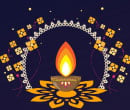
-
Customer Care 9999 091 091
- Consult Now
-
Notifications
-
Holi, known as the "festival of colors" or the "festival of spring," is a joyous occasion that heralds the arrival of spring after the winter chill. Celebrated on the full moon (Purnima) day in the Hindu calendar month of Phalguna (Falgun Maas), usually in March, it marks the beginning of the harvest season.
This year, we'll celebrate Holi on March 14th, with the traditional Holika Dahan ceremony on March 13th as per the Gregorian calendar. It's a time to revel in vibrant colors, spread happiness, and enjoy the company of loved ones.
 Holi Muhurat
Holi Muhurat
 Holi Muhurat
Holi Muhurat
Purnima Tithi Begins - 05:55 PM on Mar 02, 2026
Purnima Tithi Ends - 05:07 PM on Mar 03, 2026
Purnima Tithi Begins - 06:21 PM on Mar 21, 2027
Purnima Tithi Ends - 04:13 PM on Mar 22, 2027
Purnima Tithi Begins - 10:20 AM on Mar 10, 2028
Purnima Tithi Ends - 06:35 AM on Mar 11, 2028
Purnima Tithi Begins - 02:04 AM on Feb 28, 2029
Purnima Tithi Ends - 10:39 PM on Feb 28, 2029
Purnima Tithi Begins - 02:02 AM on Mar 19, 2030
Purnima Tithi Ends - 11:25 PM on Mar 19, 2030
Purnima Tithi Begins - 09:54 AM on Mar 08, 2031
Purnima Tithi Ends - 09:58 AM on Mar 09, 2031
Purnima Tithi Begins - 04:50 AM on Mar 26, 2032
Purnima Tithi Ends - 06:15 AM on Mar 27, 2032
Holika Dahan in 2025 will be celebrated by people on 13th March (Thursday). Here are the details.
Holika Dahan Timing - From 13 March at 11:25 PM to 12:26 AM, 14 March.
Duration - 1 Hour and 11 Minutes
Bhadra Punchha Timing- From 06:57 PM to 08:13 PM
Bhadra Mukha Timing - From 08:13 PM to 10:22 PM
Rangwali Holi in 2025 will be celebrated on 14th March (Monday)
Purnima Tithi (Starts)- 10:34 AM, 13th March 2025
Purnima Tithi (Ends)- 12:23 PM, 14th March 2025
The rituals performed during the puja are believed to ward off all evil and negativity from a person’s life. It is said that performing this puja enables one to conquer their fears and gain wealth and prosperity for a blessed life. Let us look at the vidhi for this auspicious puja:
Clean the place with holy water and cow dung to prepare it for Holika Sthapana.
Place a wooden pole at the center and surround it with beads made out of cow dung. This is known as Gulari.
Make idols of Holika and Prahalad out of cow dung and place them on a heap of woods.
Decorate the pile with toys made out of cow dung.
Make four beads out of cow dung, with each representing your ancestors, Goddess Sheetala, God Hanumana, and your family, respectively. Keep these aside for later.
During the burning of the pyre, clean your puja thali with holy water and place all the ingredients on the plate. Take a pot of water along with the plate.
Take water, rice, flowers, and money in your right hand and do a Sankalp.
Invoke Lord Ganesha and offer him rice and flowers.
Similarly, invoke Lord Narsimha and Prahalad and offer them rice and flowers.
Standing in front of the Holika pyre, offer flowers, incense sticks, lentils, turmeric, coconut, and the Gulari made out of cow dung.
Walk three to five rounds around the burning pyre with a yarn of Kaleva.
Pour the pot of water into the burning pyre.
Take the auspicious Holi colors and put them on your loved ones while also seeking the blessings of your elders.
Offer newly harvested crops to the bonfire created and distribute the roasted crop as prasad.
Considered to be one of the most celebrated festivals in the country, this festival is eagerly awaited in most parts of the nation. People get together with their near and dear ones, forgetting all forms of resentment and celebrating this “festival of love".
Starting on the eve of Purnima which is the day of the full moon, in the month of Phalguna, this festival is celebrated with great excitement. The evening is peppered with festivities surrounding the Holika Dahan, or as it is also known as Choti Holi.
The next day begins with a splash of colors that drench people in different shades, much like the multiplicity of our country that makes us unique yet one and the same.
The vibrant colors add an element of happiness and positivity to our lives, enabling everyone to rejoice in the playful events of the day. The evenings are usually marked by get-togethers where people come together to enjoy delectable dishes while making cherishable memories for the future.
Holi celebrations mark the arrival of not only spring but also the harvest season. With the winter season and the icy weather bidding adieu, a new dawn of spring breaks, filling the hearts of everybody with renewed hopes and vigor for the new year. Celebrated in the month of Phalguna, this festival begins with the Holika Dahan on the night of the full moon or Purnima.
Ancient Puranas and sacred scriptures make references to the celebrations of this day in great detail. The famous Dasakumara Charita as well as the renowned poet Kalidasa makes references to this festival during the reign of Chandragupta the second, around 4th century.
As per the traditions, this day symbolizes ridding oneself of the sins of the past while also putting an end to conflicts that engulf our life with negativity. This day marks the victory of justice over evil and it celebrates the spirit of forgiveness to ensure greater harmony in society.
There are several different rituals associated with this propitious festival. Here we mention the most prominent rituals of the day:
A day before the festival of colors, a wooden pile is assembled at every crossroad for Holika Dahan.
On the eve of the festival, an effigy of Holika is placed on the pile and burnt to commemorate the burning away of all things evil.
Kids pray pranks trying to chase away the evil Dhundhi who once scared little children in the Kingdom of Prithu.
On the day of the festival known as Dulandi, people play with colors, especially in the Northern parts of the country. Using pichkaris and abeer people celebrate the day with enthusiasm and dancing.
A special drink made out of dry fruits and milk is prepared on this occasion. This drink is famously known as thandai and it is often laced with bhang to heighten the spirit of the people.
People in the Southern parts of the country pay a visit to Kaam dev, the god of love, on this day.
The evenings are reserved for meet and greet where people visit their loved ones and share the special dishes prepared for this occasion like gujiya, malpuas, mathri, papads, and chips
The festival is celebrated all around the country but the name changes. The spirit of the people however remains equally vibrant regardless of the geographical location. Let us take a look:
Lathmar Holi: A happy Holi is celebrated in Mathura to commemorate the pranks played by Krishna to trouble the gopis. Women in the city hit the men with sticks on this day to observe the ancient tradition of the gopis punishing Krishna for his mischief.
Rangpanchami: In Maharashtra, the festival of color is called Rangpanchami, where people perform special dances that help them release their pent-up emotions, ridding them of all negative emotions.
Basant Utsav: People in West Bengal celebrate this festival under the name Basant Utsav. Started by the Noble laureate, Rabindranath Tagore, this spring festival is celebrated with complete serenity and joy.
Hola Mohalla: In the state of Punjab this day is celebrated by organizing a huge fair at the Anandpur Sahib where mock battles are held to consolidate the Sikh community since ancient times.
Kaman Pandigai: In Tamil Nadu, people celebrate the sacrifice of Kaam Dev to wake Lord Shiva from deep meditation because the world was immersed in chaos, on the day of this festival
Phagu Purnima: In some places like Bihar, the festival is celebrated as Phagu Purnima.
According to Vedic astrology, this day holds a lot of prominence as the day that can ward off any evil energy impacting an individual’s life.
Individuals are advised to pray to Lord Hanumana as it can help get rid of any sense of fear in a person.
Offering jaggery and a black yarn at the temple of Lord Hanumana can guard an individual against all kinds of negativities.
Furthermore, the day marks the arrival of the March equinox which is when the equator faces the center of the Sun.
Falling on the last full moon day of the month of Phalguna, according to the lunar calendar, this day has a lot of significance astrologically.
Hindu mythology narrates the story of the evil king Hiranyakashyap who was given a boon that made him immortal. Taking advantage of this, he set out to torture and torment innocent people, claiming to be the new God. Wanting people to worship him, he committed grave injustices.
However, his own son, Prahalad, was a devotee of Lord Vishnu and he refused to give up on his prayers. Angered by this, Hiranyakashyap tried to kill him but failed.
After many attempts, he asked his sister, Holika to sit on a pyre of burning wood along with Prahalad, to kill him. She was blessed with the power to withstand fire using her magical robe.
However, seeing his beloved Prahalad chanting his name, Lord Vishnu appeared in his Narasimha avatar to kill Hiranyakashyap.
On this day of happy holi 2025, every individual plays with colors as they forge memories full of love with their friends and families. The spirit of the people reaches an all-time high as they gather together to celebrate the day with fun and frolic.
To know more about this occasion of happy Holi, get connected with Astroyogi astrologers right away!






| Date | Monday, 14 April 2025 |
| Tithi | Krishna Pratipada |
| Day | Monday |
| Paksha | Krishna-Paksha |
| Sunrise | 5:57:8 |
| Sunset | 18:46:57 |
| Moonrise | 20:7:34 |
| Nakshatra | Swati |
| Nakshtra Till | 24 : 14 : 24 |
| Yog | Vajra |
| Yog Till | 22 : 38 : 41 |
| Karan I | Kaulav |
| Surya Rashi | Pisces |
| Chandra Rashi | Libra |
| Rahu Kal | 07:33:21 to 09:09:35 |